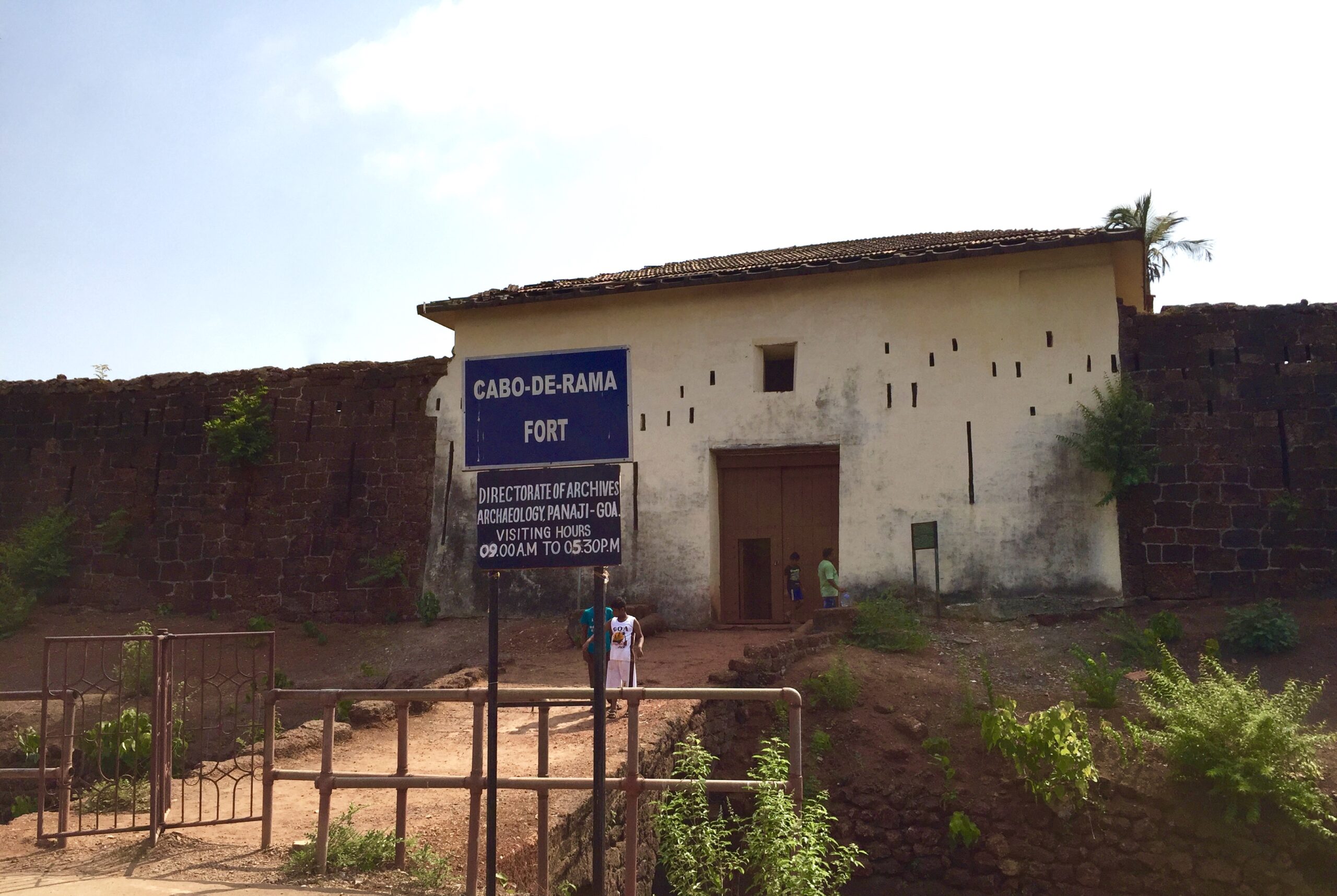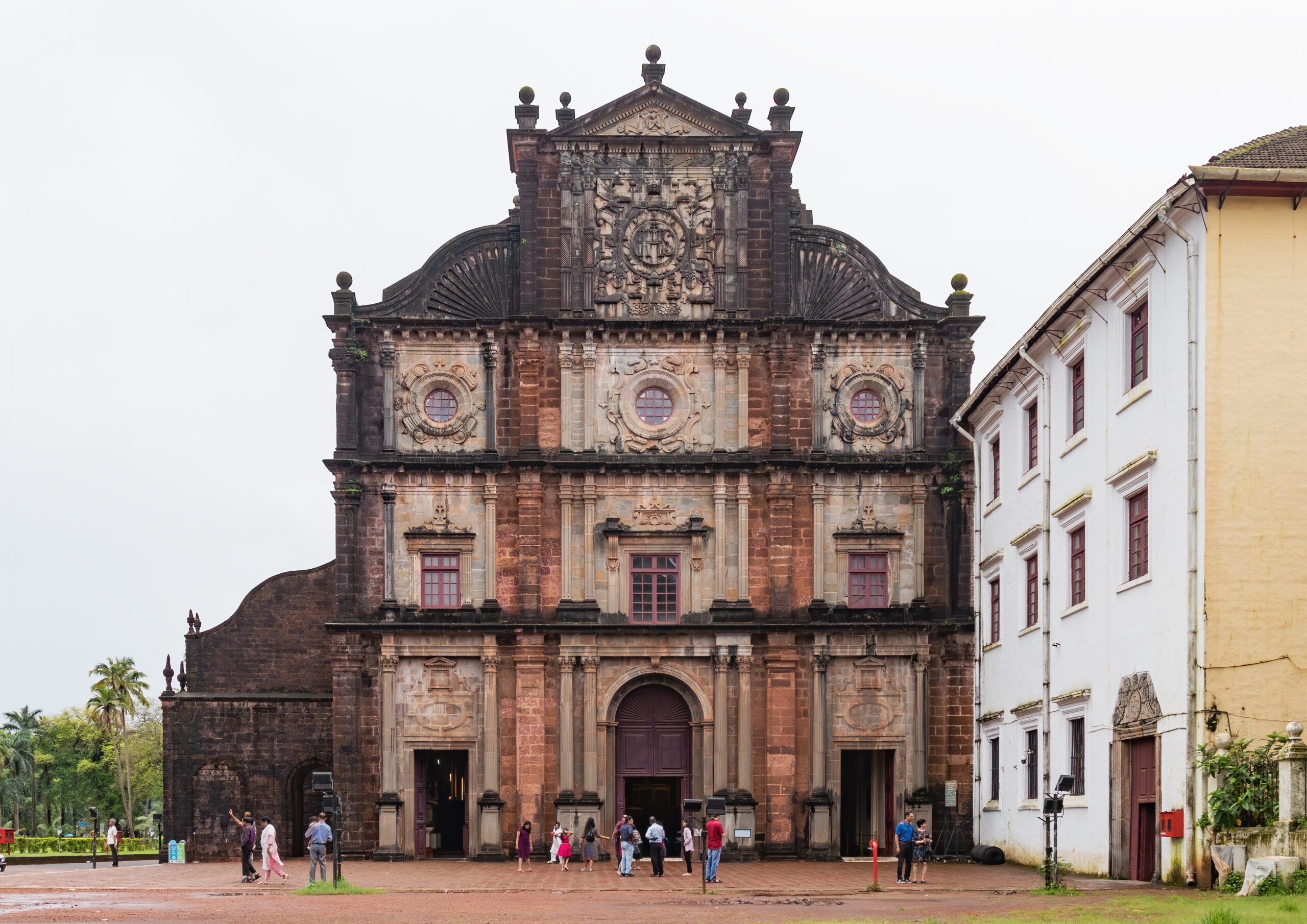Ancestral Goa, popularly known as the Big Foot Museum, is a unique open-air cultural space that vividly recreates the essence of traditional Goan village life. Established in the early 1990s by renowned artist and preservationist Maendra Jocelino Araujo Alvares, this heritage theme park offers an immersive journey into Goa’s past. Through detailed life-sized sculptures, vibrant scenes, and handcrafted exhibits, the museum captures the daily rhythms, customs, and craftsmanship of a bygone era in a charming village setting.
Why it is named big foot museum
The Big Foot Museum gets its name from a sacred rock-carved footprint located within the museum grounds in Loutolim, Goa.
The Story Behind the Name:
According to local legend, a wealthy and kind-hearted man named Mahadar once lived in the village. When he lost everything due to betrayal, he chose a life of simplicity, humility, and devotion. He stepped onto a rock and prayed to God, asking to take away others’ pain. Moved by his selflessness, the gods left an imprint of his foot on the rock as a sign of blessing.
That footprint—now called the “Big Foot”—is believed to have spiritual significance. Visitors often make a wish there, believing it brings good fortune if wished with a pure heart. That’s why the museum is named “Big Foot”—as a tribute to this tale of humility, sacrifice, and spiritual power, anchoring the museum in Goan folklore.
What to Expect at Big Foot Museum
Visiting the Big Foot Museum is like stepping into a living storybook of old Goa. Here’s what awaits you:
1. A Life-Sized Goan Village
Explore a vibrant recreation of a traditional Goan village, complete with:
- Fishermen, potters, blacksmiths, cobblers, and farmers depicted through realistic sculptures
- Scenes of rural occupations, daily chores, and cultural rituals
- Traditional homes and huts made from laterite, bamboo, and clay
2. The Legendary Big Foot
A rock-carved footprint inside a small shrine, believed to be sacred. Local folklore says making a wish here with a pure heart brings good fortune.
3. 14-Metre Laterite Sculpture of Saint Mirabai
Marvel at India’s longest laterite sculpture, hand-carved by founder Maendra Alvares in just 30 days. It’s a tribute to the devotional poet-saint Mirabai and is listed in the Limca Book of Records.
4. Casa Araujo Alvares
Take a guided tour of a beautifully restored Portuguese-era mansion. The heritage home features: Antique furniture, Period décor & A sound-and-light show narrating the lifestyle of a 19th-century elite Goan family.
5. Art Gallery & Handicrafts
Visit the on-site art gallery showcasing Goan and Indian artists. The craft center offers local handmade goods, souvenirs, spices, and more.
6. Nature & Eco Zones
Walk through serene surroundings including: A bird habitat, Spice plantations, rubber trees & Bubbling springs.
7. Big Foot Dance Floor
An enormous open-air arena shaped like a giant foot, used for local festivals, dances, and cultural events. It’s also a picturesque spot for photos.
Why to visit Big Foot Museum
1. Experience Goa’s Traditional Village Life
Step away from the usual tourist trail and immerse yourself in the sights and stories of Goa’s rural past, beautifully brought to life in this open-air museum.
2. Discover the Story Behind the “Big Foot”
Visit the mystical laterite footprint believed to be a symbol of selflessness and humility. Local legends say heartfelt wishes made here may come true.
3. Witness a Record-Breaking Sculpture
Admire the impressive 14-metre-long laterite sculpture of Saint Mirabai—India’s longest—crafted by the museum’s founder in just 30 days.
4. Journey through Goa’s Colonial History
Tour Casa Araujo Alvares, a restored heritage mansion showcasing Indo-Portuguese architecture, antique furniture, and a narrated light-and-sound experience.
5. Ideal for All Ages
Whether you’re a history lover, a curious child, or a cultural explorer, the museum offers something for everyone—educational, fun, and deeply rooted in tradition.
6. Celebrate Local Art & Craftsmanship
Explore exhibits of Goan folk art and shop for locally made handicrafts, spices, and souvenirs that reflect the region’s artistic spirit.
7. Reconnect With Nature
Wander through lush landscapes filled with spice gardens, rubber trees, bubbling springs, and a bird sanctuary—an oasis of peace and greenery.
8. A Visual Treat for Photographers
The museum’s vibrant displays, unique installations, and scenic spaces provide the perfect backdrop for memorable photos.
Visiting Information
1. Timings:
The Big Foot Museum is open to visitors daily from 9:00 AM or 10:00 AM until 6:00 PM. (Opening time may vary slightly depending on the source, but the museum consistently closes at 6:00 PM.)
2. Entry Charges:
- Adults: ₹100
- Children (ages 3–10): ₹50
- Still Photography: ₹20
- Casa Araujo Alvares Sound & Light Experience: ₹100 to ₹200, depending on the package (some include a full tour of the ancestral home)
3. Ideal Duration of Visit
Plan to spend about 1 to 2 hours exploring the main museum. You may want to stay longer if you wish to enjoy a guided tour, attend cultural performances, or tour the Portuguese-era heritage house nearby.
How to Reach Big Foot Museum
1. By Bus
- From Margao Bus Stand, board a KTC bus heading to Loutolim (fare ₹20‑30). Inform the conductor about your stop; it’s near the Cross Museum landmark
- From Panjim, take a bus to Margao, then transfer to a Loutolim bus
- After alighting at Loutolim, the museum is just a 1 km walk or a short rickshaw ride away.
2. By Taxi or Ride-Hailing
- Hire a taxi from Panaji, Margao, or the Airport (Dabolim). Use ride-hailing apps like Goa Miles for better fares—approx. ₹300‑400 from Margao, ~₹600‑800 from Panaji
- Provide the landmark “Cross Museum, Loutolim” to help drivers find it easily
3. By Auto-Rickshaw
Available from Margao or Loutolim bus stop area. The trip costs around ₹150‑300 depending on distance from Margao (~20–30 minutes)
4. Optional: Bicycle Rental
Rent a scooter or bicycle for scenic travel. From Margao to Loutolim (~10 km), it’s about a 40–50 minute ride—great if you’re comfortable with local roads and weather
Tips for visiting
- Plan your visit early in the day or late afternoon to avoid the mid-day heat and enjoy better lighting for photos.
- The museum is outdoors—wear comfortable walking shoes, a hat/cap, and carry sunscreen and water.
- Bring cash for entry tickets, souvenirs, snacks, or auto-rickshaws, as smaller vendors may not accept digital payments.
- Still cameras are allowed for a small fee (around ₹20), so don’t forget to pay if you plan to take photos.
- The vibrant displays, sculptures, and village scenes offer great photo opportunities—perfect for social media or travel albums.
- Consider attending the sound and light show at Casa Araujo Alvares, located nearby—it’s a short walk and gives deeper insight into Goan colonial life.
- Check if any folk performances, festivals, or special events are scheduled during your visit
- Take your time reading the local legends and cultural stories displayed throughout the museum—they add depth and meaning to the experience.


